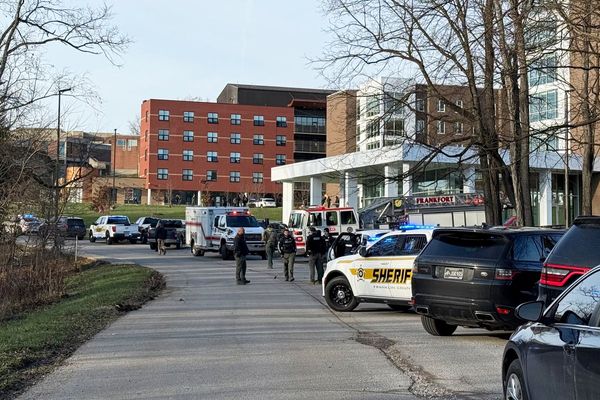
Michelle Liu, who requested a pseudonym for anonymity, is one of the thousands of Taiwanese students returning home as COVID-19 cases escalate around the world. Liu had just received her coronavirus test result after coming back from the Netherlands.
She tested positive for COVID-19.
Liu only returned to Taiwan on her mother’s insistence. “I knew it would look very bad if I came home. People already hate us enough. Now the fact that we are bringing the virus back is really not helping,” Liu said. “People are really hostile to those who come back. Especially now that I have the virus.”
Despite stricter measures adopted by the authorities to curb imported cases, including barring entry to non-resident foreign travelers, the prevention measures are not airtight. One of the contentious issues is the lack of automatic testing for everyone who returns.
In Lieu of Automatic Testing, A More Limited Approach
Roy Ngerng, a researcher at Taiwan’s Risk Society and Policy Research Center, said it might not be cost-effective to test everyone.
“What the government may be doing is looking at the number of tests that are conducted at the borders and the positive rate. If the current rate isn't high, then it would mean not as many people are infected,” Ngerng said.
On March 25, the scope of Taiwan’s COVID-19 screening tests were expanded to include medical and healthcare workers with suspected infection symptoms, from previously only those who had traveled to countries with coronavirus outbreaks and displaying suspected symptoms, or who had contact with coronavirus patients, as well as patients with severe flu-like symptoms.
Ngerng likens this expansion to a kind of “localized mass testing.” If the positive rate is low, it means their testing strategy has been successful, while a higher positive rate would suggest varying levels of community spread, he said.
“Looking at the number of serious respiratory cases in Taiwan thus far, it is unlikely the positive rate should be too high. If the positive rate for healthcare workers is similar to the current positive rate based on the total tests Taiwan has done so far, it means its current testing strategy is relatively effective,” Ngerng suggested.
The number of confirmed COVID-19 cases in Taiwan has quadrupled from March 15 to over 350. Some of the infection sources are untraceable.

A Quarantine System That Begins with Disembarkment
Taiwan’s Centers for Disease Control (CDC) relies on a quarantine system for returnees who have no symptoms.
“We have formulated a management mechanism based on the level of infection risk. Simultaneously, we are applying artificial intelligence to help civil affairs, health services, and police agencies to follow up on people who are in quarantine and isolation to ensure they follow the rules thoroughly. Violators will be heavily penalized,” a CDC spokesperson told The News Lens in an email.
Upon arrival in Taiwan, travelers are required to fill out a paper or online form to state their personal information and accommodation plans for quarantine, which could be either one’s home or a government-assigned hotel. An official double-checks information given and takes down the individual’s phone number, dialing it on the spot to ensure that it is correct.
The CDC staff also explains that everyone must follow the two-week quarantine rule, emphasizing the severity of violating the regulations. Those passing through the health inspection are required to leave the airport either by driving home, being picked up by family, or by use of a special quarantine taxi.
Returnees would receive a special care package and two phone calls per day during the quarantine. They are reminded that their phone is being tracked, and instructed to report any symptoms.
Nearly 50,000 people are held in home quarantine in Taiwan. The mobile phone tracking system automatically alerts authorities when a quarantined person leaves their address. Police respond within 15 minutes when someone triggers an alert.
Health Minister Chen Shih-chung (陳時中) has reportedly said that community transmission in Taiwan is “unavoidable”. When that happens, the system would need to change, Ngerng added.
“More tests would need to be done by then to bring the infection under control, which could mean allowing more general public testing,” he said.

Public Confidence in Taiwan’s Coronavirus Prevention System
Rachel Liang, a Taiwanese student who returned from the United States in March, said the situation was “crazy” in California. Because of the shelter-in-place order, people cannot go out except for medical reasons and food.
“People [were] hoarding stuff. Toilet paper, masks, disinfecting products, frozen food were all sold out,” she said.
Liang had booked her ticket in advance to come back for spring break. She had planned to stay in Taiwan for five days and return to California before school starts. But as classes have gone online, Liang is extending her stay in Taiwan, where she feels relatively protected from both the virus and its destabilizing influence on society.
“I think the [Taiwanese] government is doing a good job. Although in the end, it really depends on the individual to enforce the things the government asks us to do,” Liang said.
READ NEXT: CECC Advises Self-Health Management for Holiday Travelers and Expands Face Mask Rules
TNL Editor: Daphne K. Lee, Nicholas Haggerty (@thenewslensintl)
If you enjoyed this article and want to receive more story updates in your news feed, please be sure to follow our Facebook.
The News Lens International Edition







